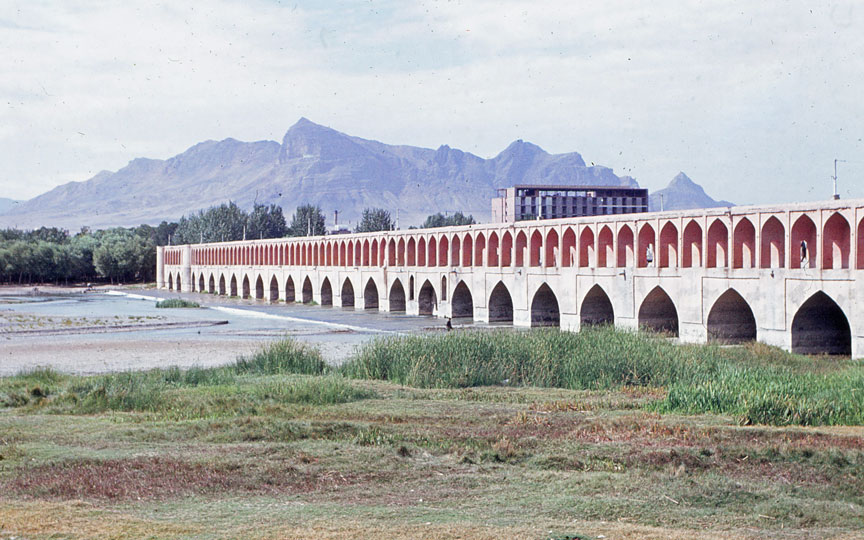

Eşfahān
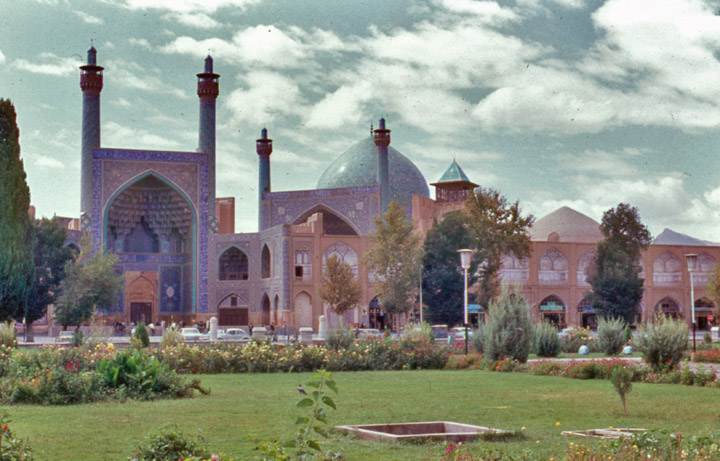
Masjid-i Shāh (Royal Mosque)
Isfahan major city of the Seljuq Turks (11th–12th century) and of the Safavid dynasty of Iran (16th–18th century), now a major city in west central Iran. It lies on the Zāyandeh River, about 210 miles (340 km) south of Tehrān.

mosque entrance
Little is known of Eşfahān before Sāsānian times (c. AD 224–c. 651). In the 4th century a colony of Jews was said to have been established in the suburb of Yahūdīyeh. When the Arabs captured Eşfahān in 642, they made it the capital of al-Jibāl province. Toghrďl Beg, the Turkish conqueror and founder of the Seljuq dynasty, made Eşfahān the capital of his domains in the mid-11th century; under his grandson Malik-Shāh I (reigned 1073–92), the city grew in size and splendour. After the fall of the Seljuq dynasty (c. 1200), Eşfahān temporarily declined.
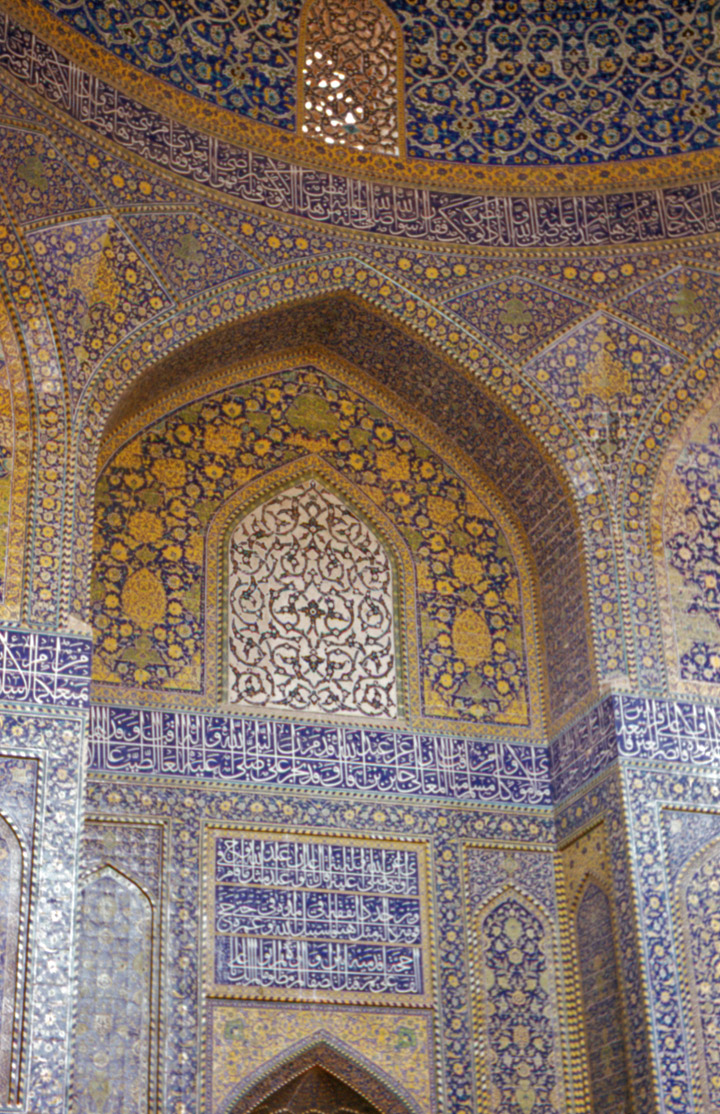
mosque interior
The city's golden age began in 1598 when Shāh'Abbās I the Great (reigned 1588–1629) made it his capital and rebuilt it into one of the largest and most beautiful cities of the 17th century. In the centre of the city he created the immense Meydān-i Shāh (Royal Square) as well as the noted Masjid-i Shāh (Royal Mosque), which was not finished until after his death, and the Masjid-i Sheykh Lotfollāh (Lotfollāh Mosque). In 1722 the Ghilzay Afghans took the city after a long siege.
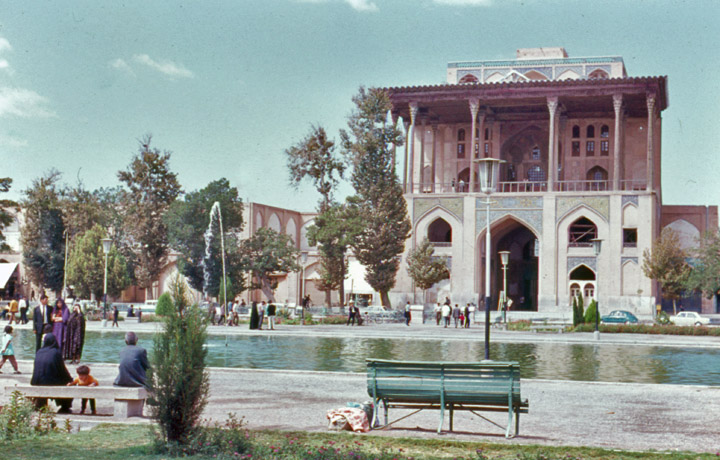
Meydān-i Shāh (Royal Square)
For many years the greater part of the city was a heap of rubble, and its
population dwindled to a fraction of what it had once been. Recovery began
during the reign of Reza Shah Pahlavi (1925–41). An industrial quarter was
built, and many of the historic buildings were restored. Eşfahān, a major
textile centre, is well known for its handicrafts and traditional manufactures
of tiles, rugs, and cotton fabrics. More modern industries include steelmaking
and petroleum refining. The city is the home of Eşfahān University (established
1936). Pop. (1985 est.) 1,121,200.
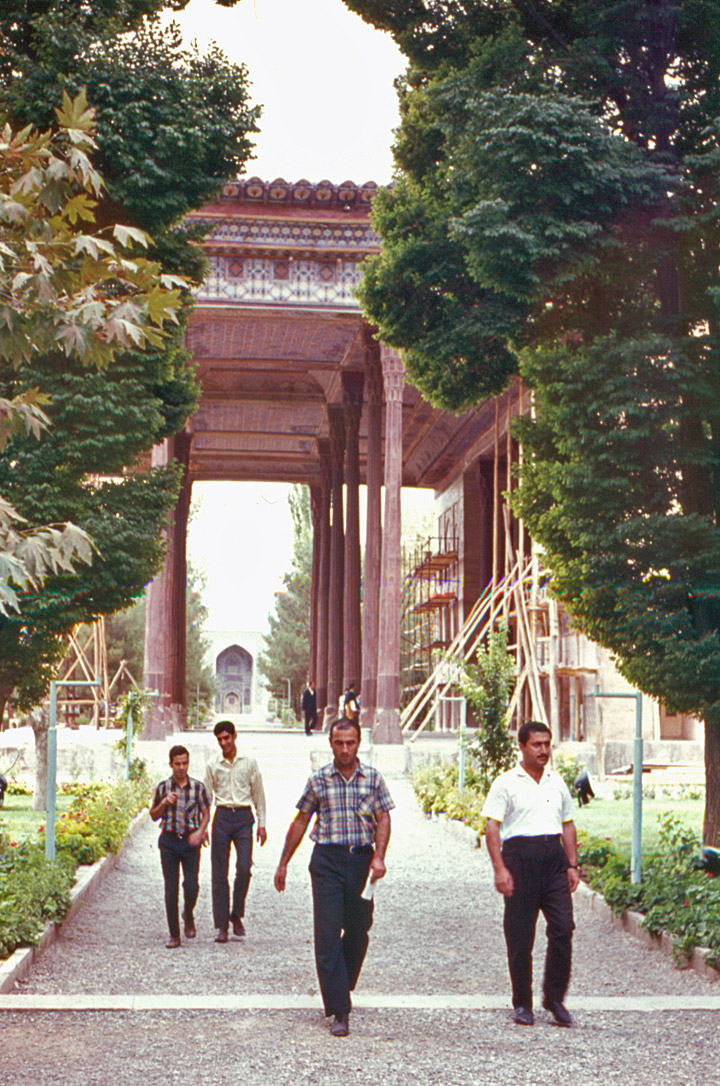
palace on the Royal Square

view of the mosque from the balcony of the Royal Palace

Eşfahān School of Painting
The last great school of Persian miniature painting, at its height in the early 17th century under the patronage of the Safavid ruler Shāh 'Abbās I (d. 1629). The Eşfahān school's leading master was Rezā'Abbāsī, who was greatly influenced by the Kazvin school of portraiture, particularly the work of Sādiqī Beg (late 16th century).
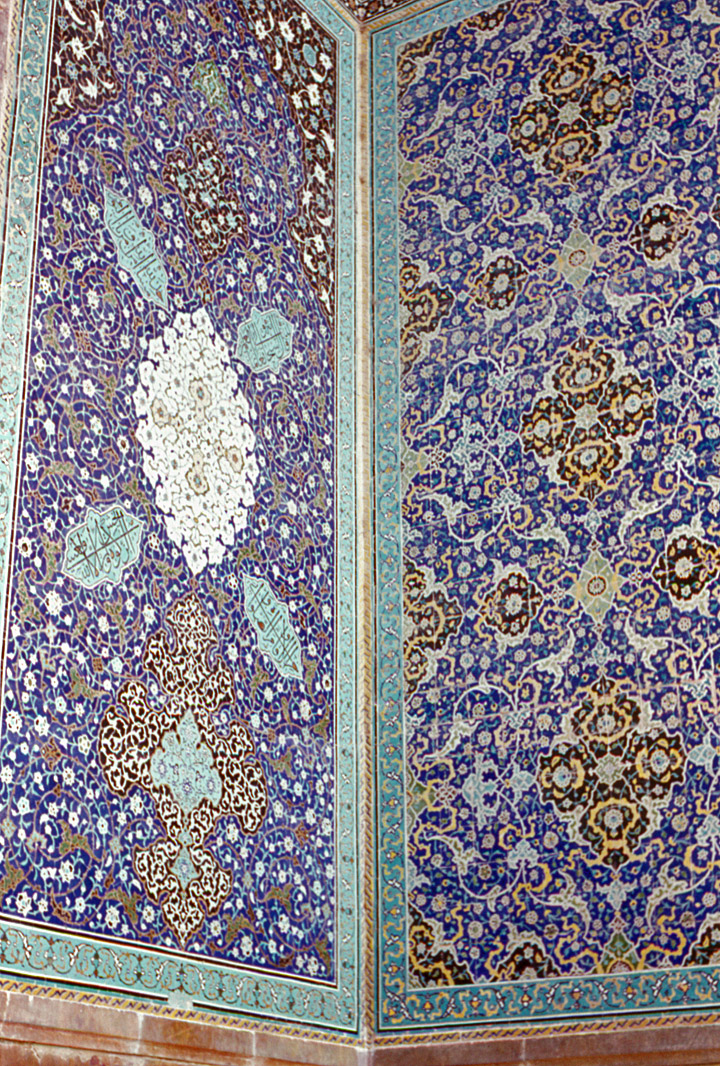
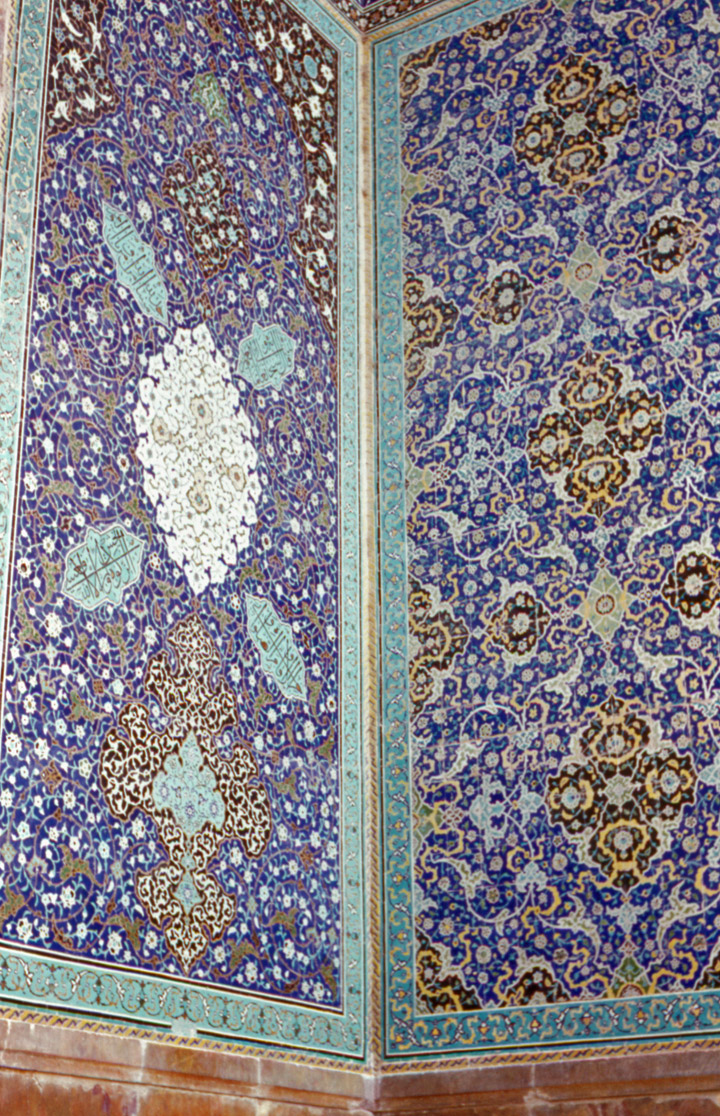
detail from the mosque
Rezā 'Abbāsī preferred naturalistic subjects and portraiture to the illustrative themes that had dominated Persian miniature painting for 200 years. His painting “Two Lovers” (Metropolitan Museum of Art, New York City) is among the most accomplished works of the Eşfahān school. Although there is an element of stylization, the exquisiteness and delicacy of the hands, faces, and costumes infuse the painting with an impressionistic quality. The curved, plumpish figures are highly effeminate, in the tradition of the late Safavid court. Rezā'Abbāsī was also a master of line drawing, a form of art not popular in the Islāmic world before the end of the 16th century.
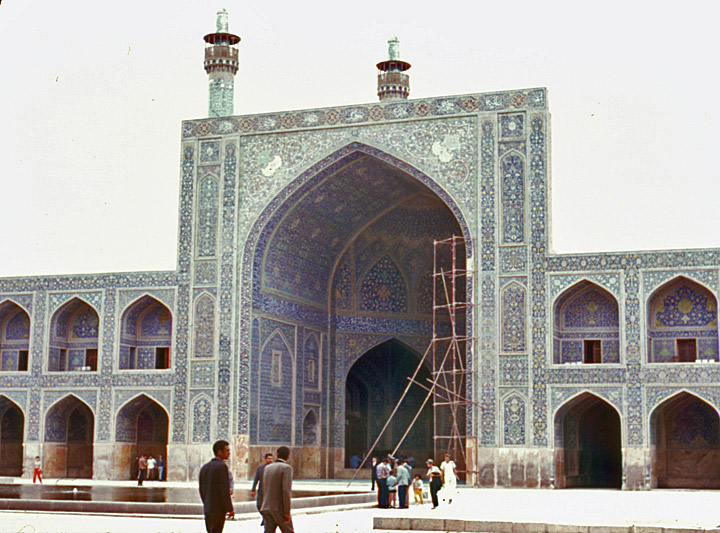
mosque
Painters of the Eşfahān school imitated Rezā'Abbāsī's style, and, although they never equaled the master, they produced much delightful work through the beginning of the 18th century. Among Rezā'Abbāsī's best pupils were his son Mohammad Shafī and Mo'īn Mosavver.
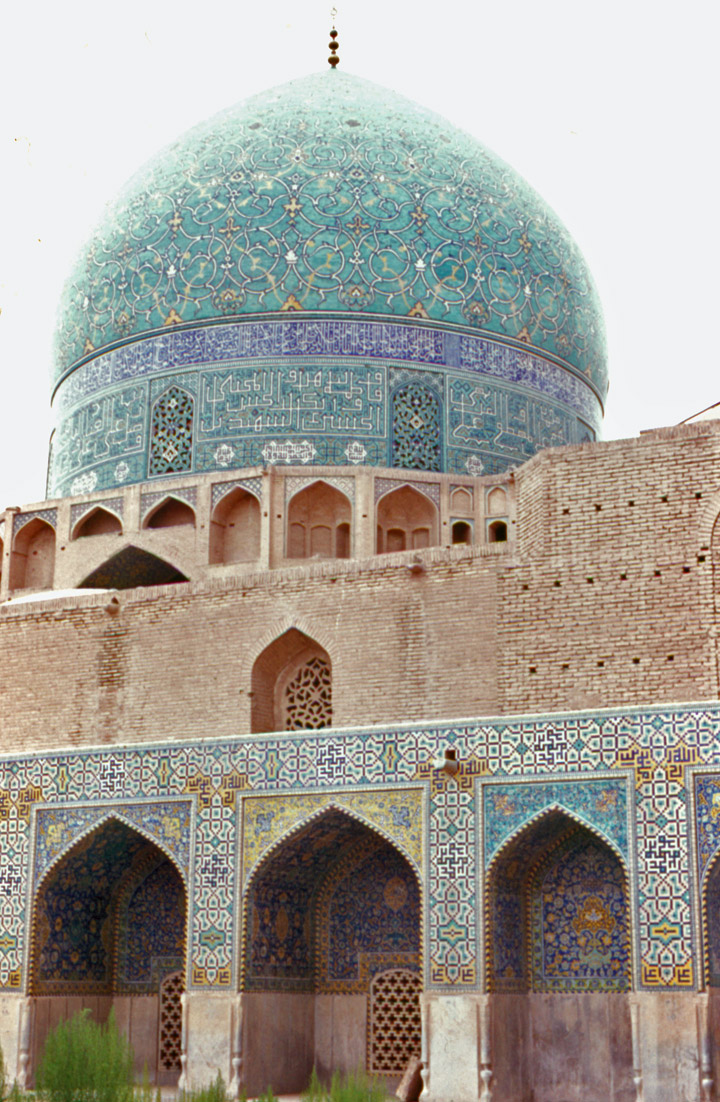
dome
The Eşfahān school lost its freshness after the master's death, and miniature
painting in Iran declined.
Text from Encyclopedia Britannica
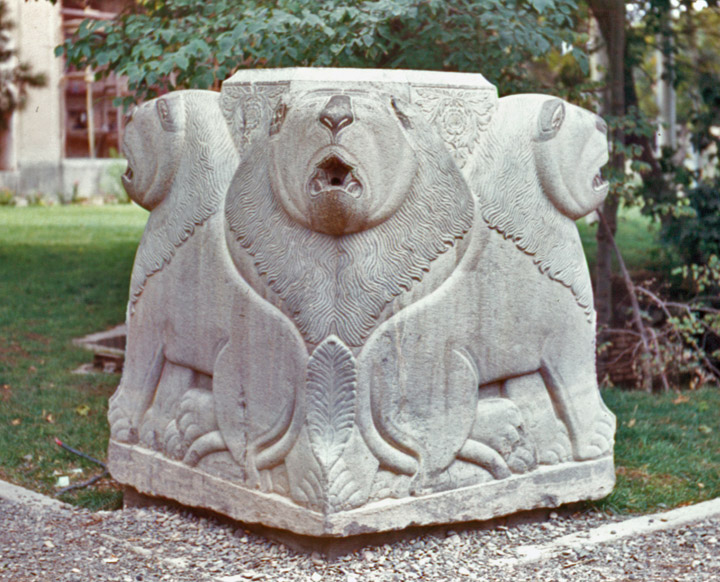
pillar base
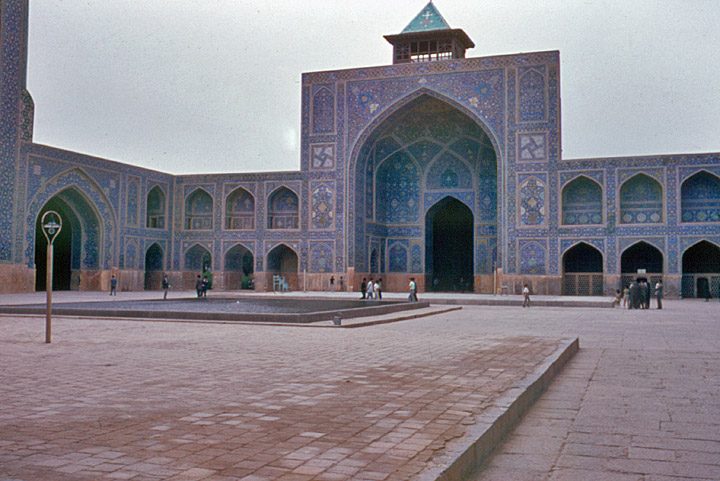
mosque courtyard
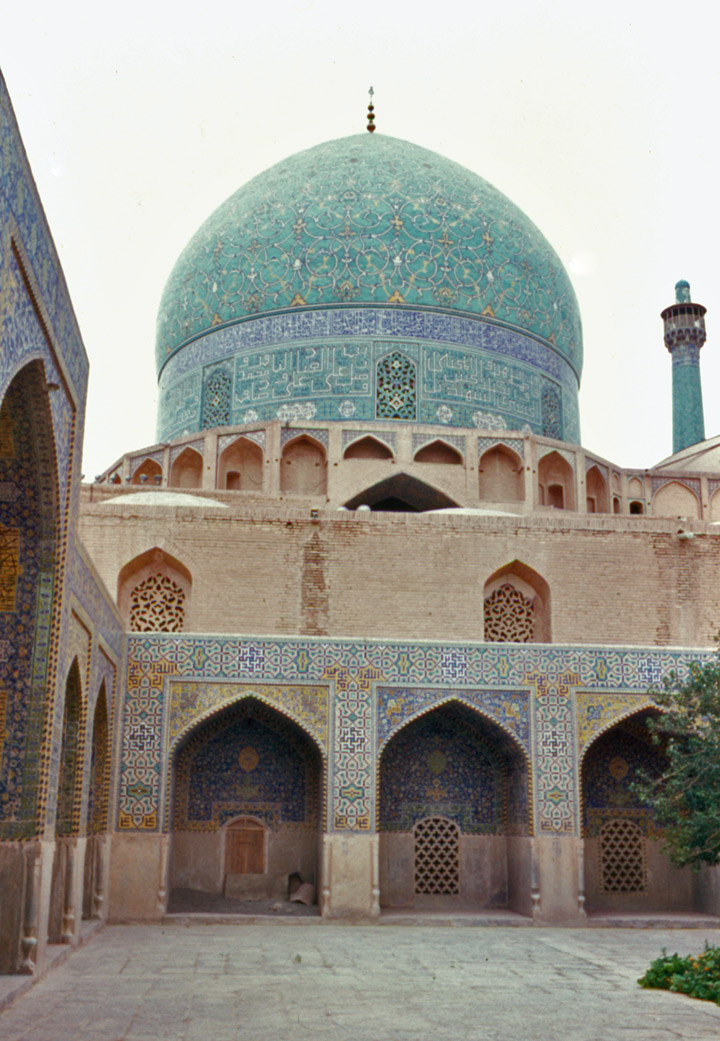

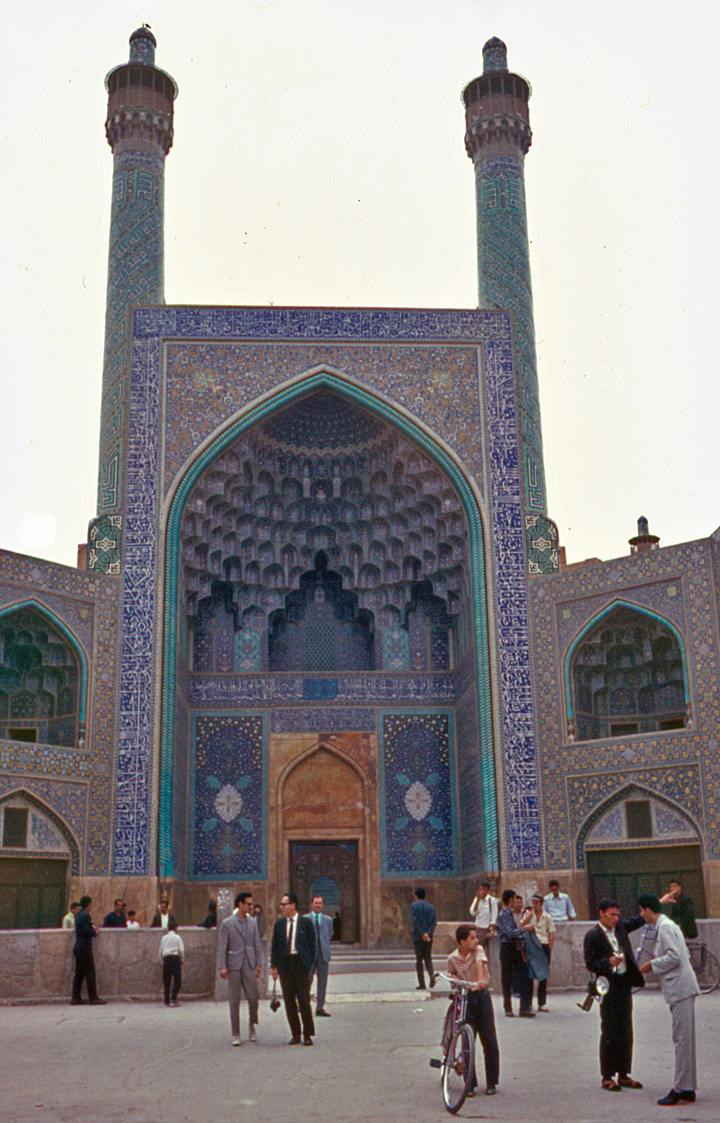
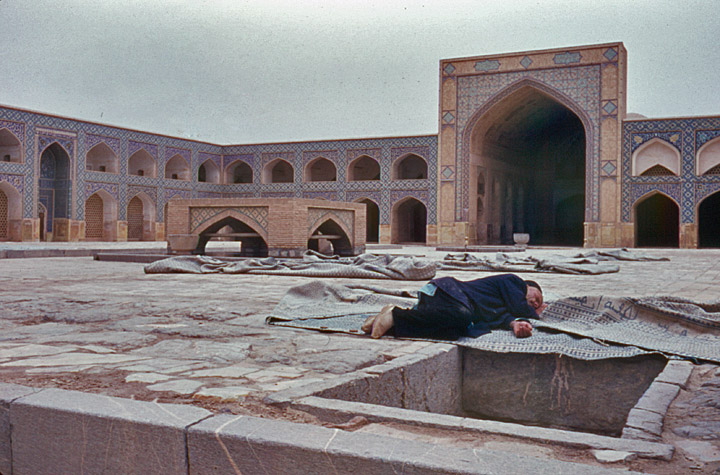
resting, not praying


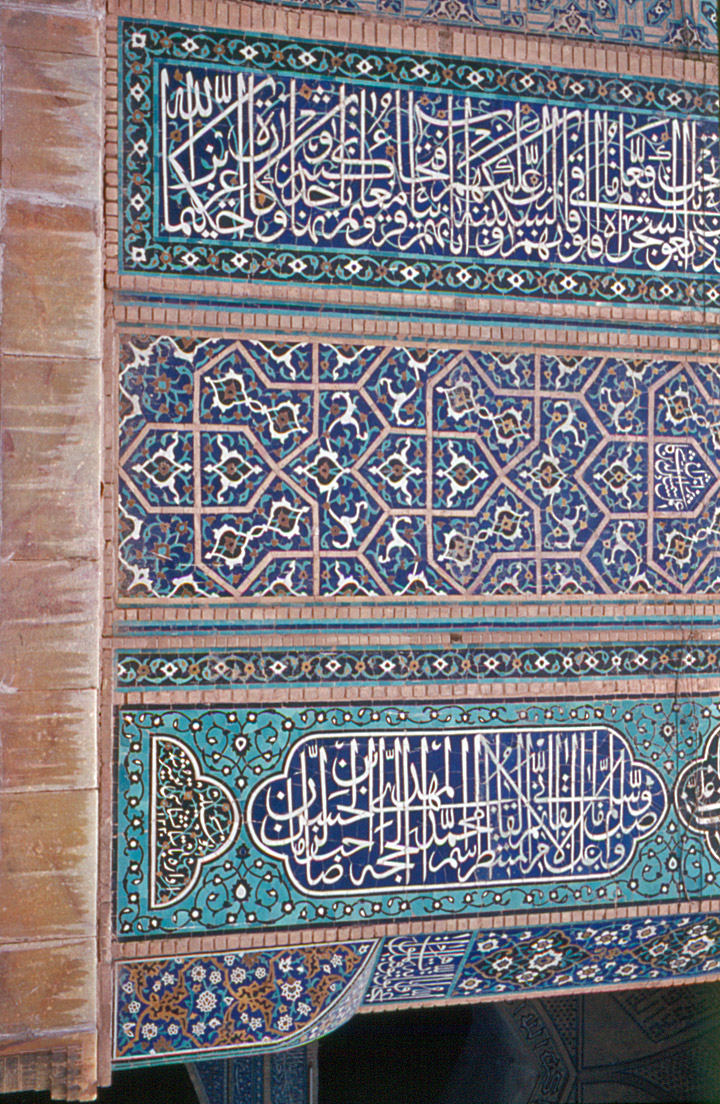
detail
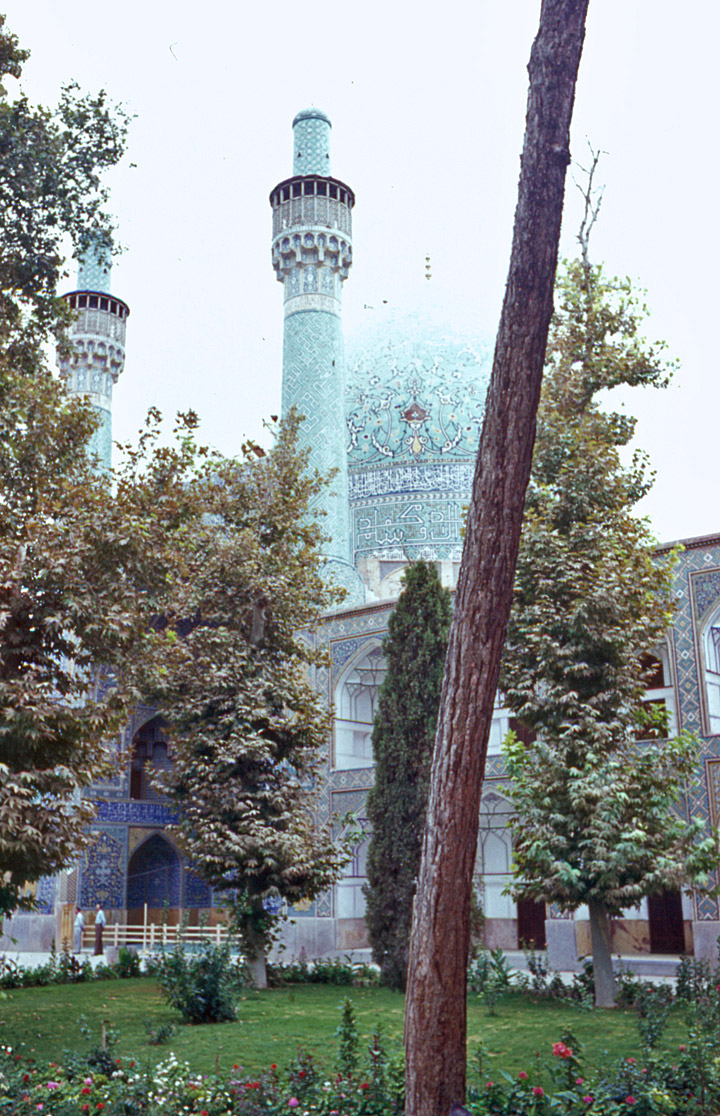
minarets


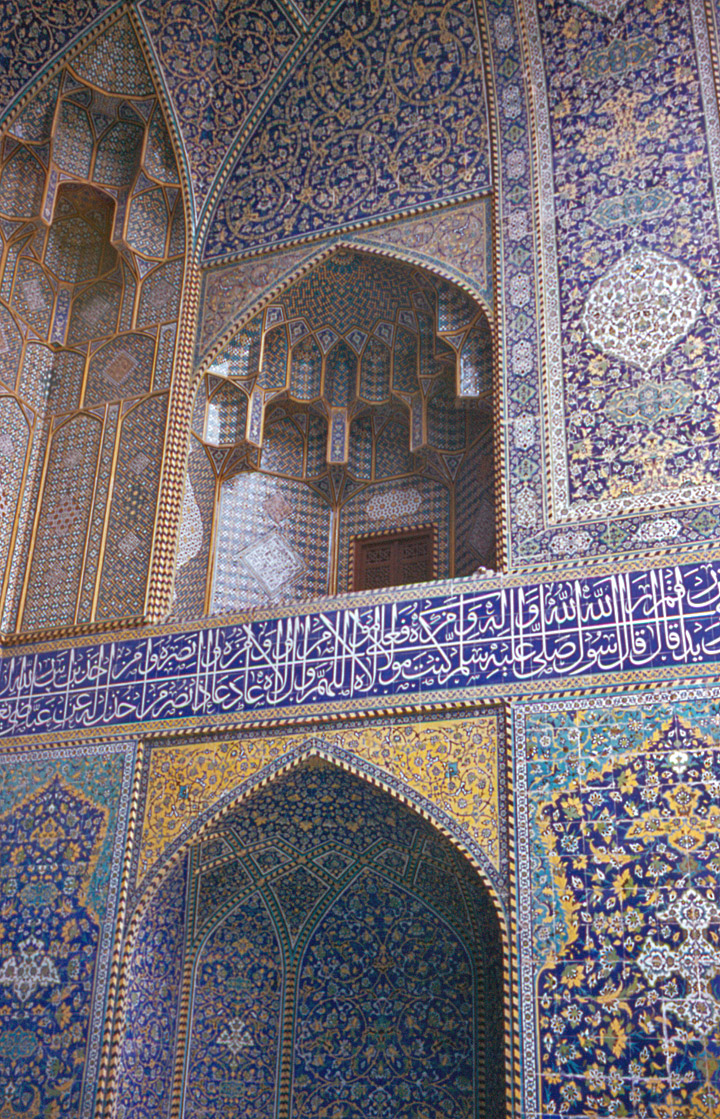

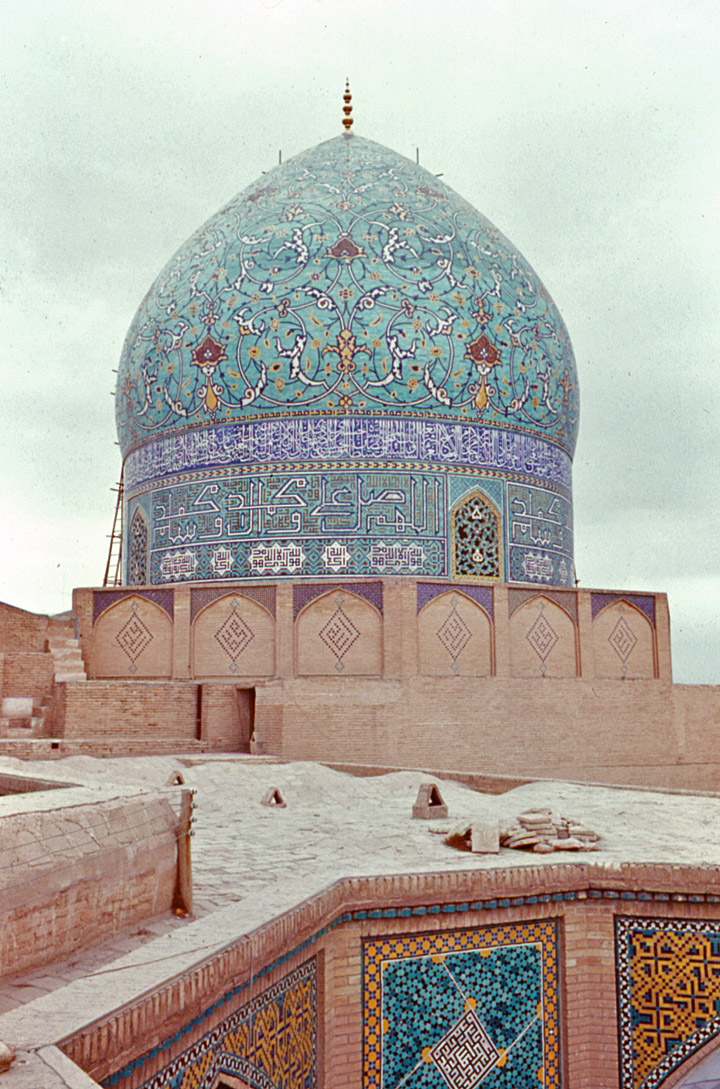
seen from the roof level

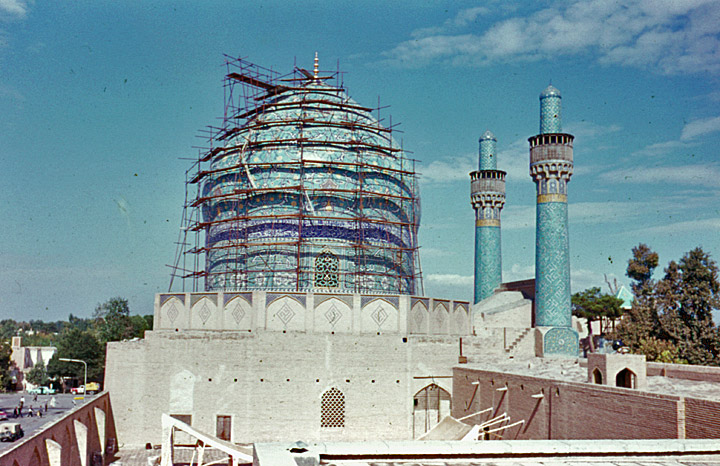
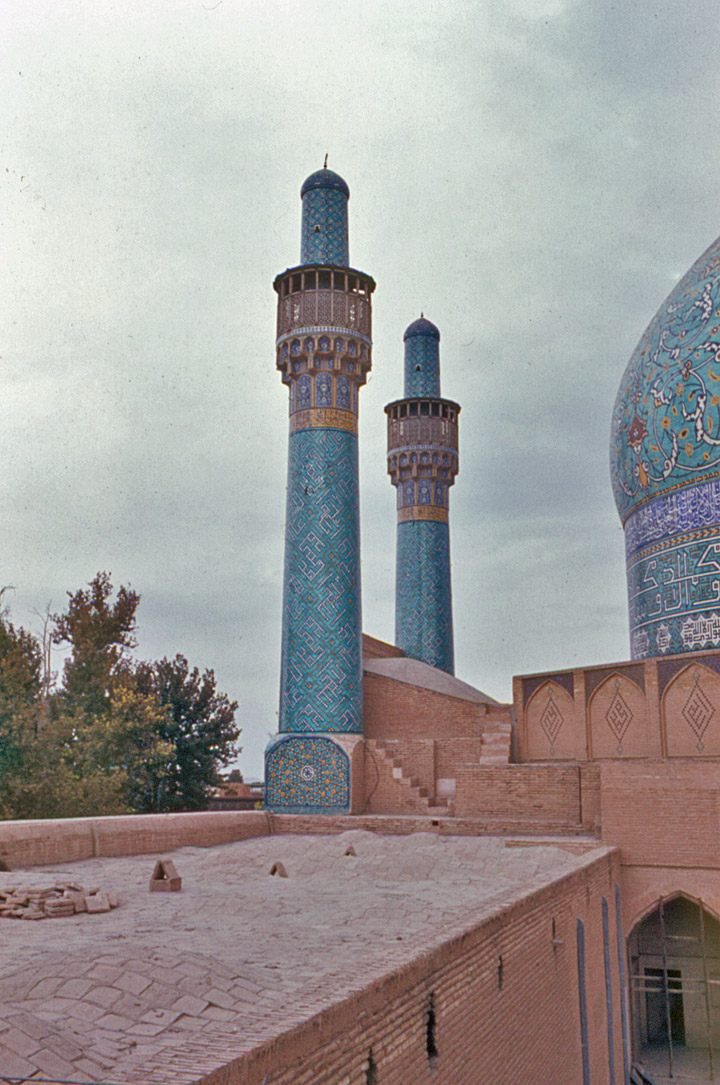
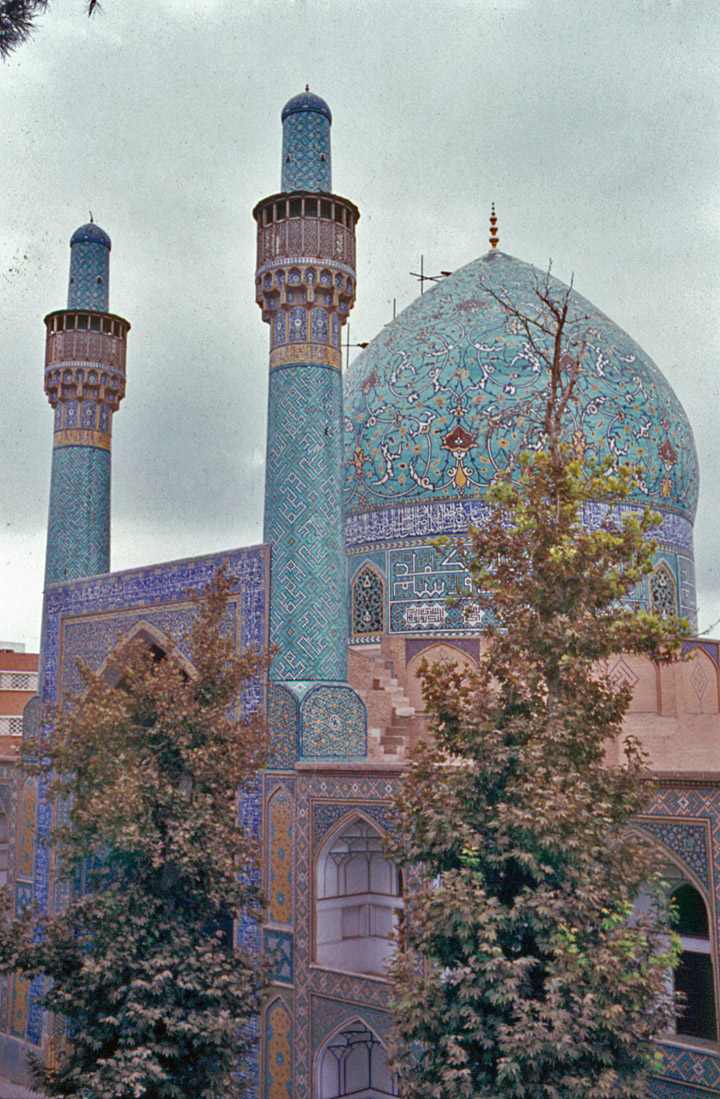

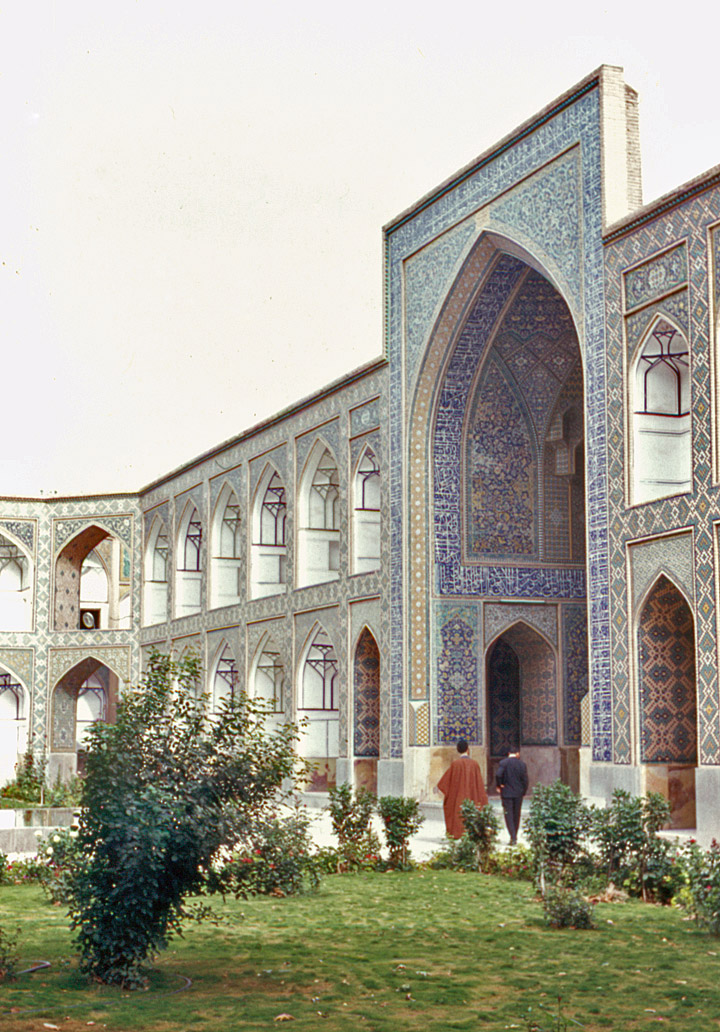
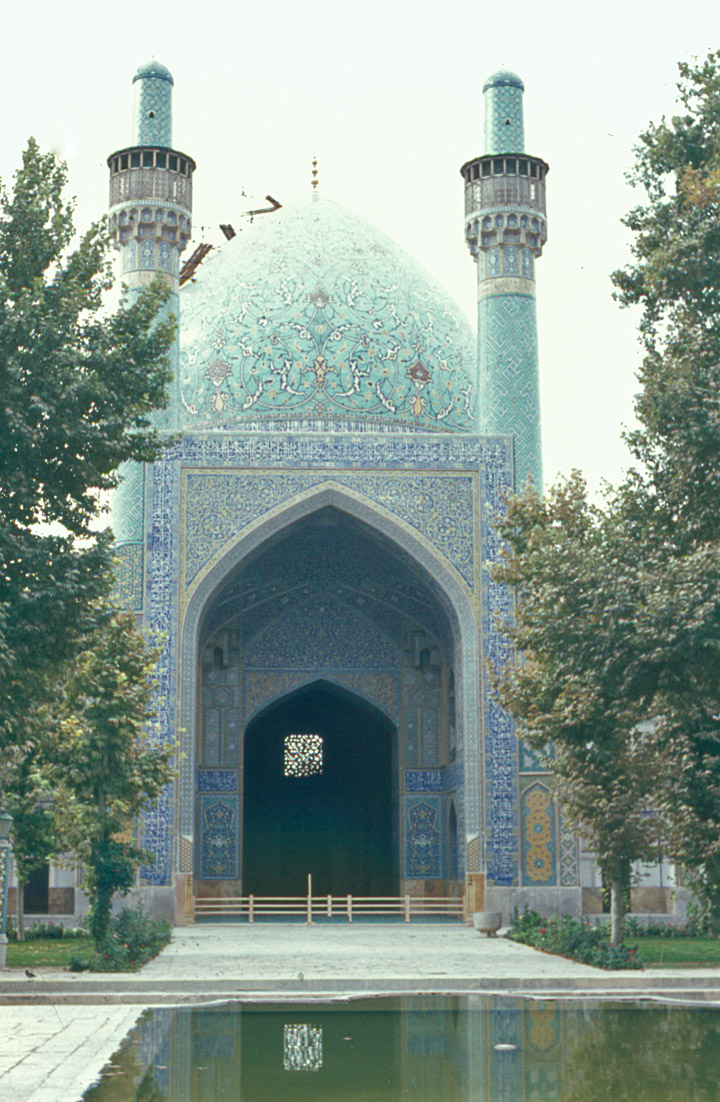
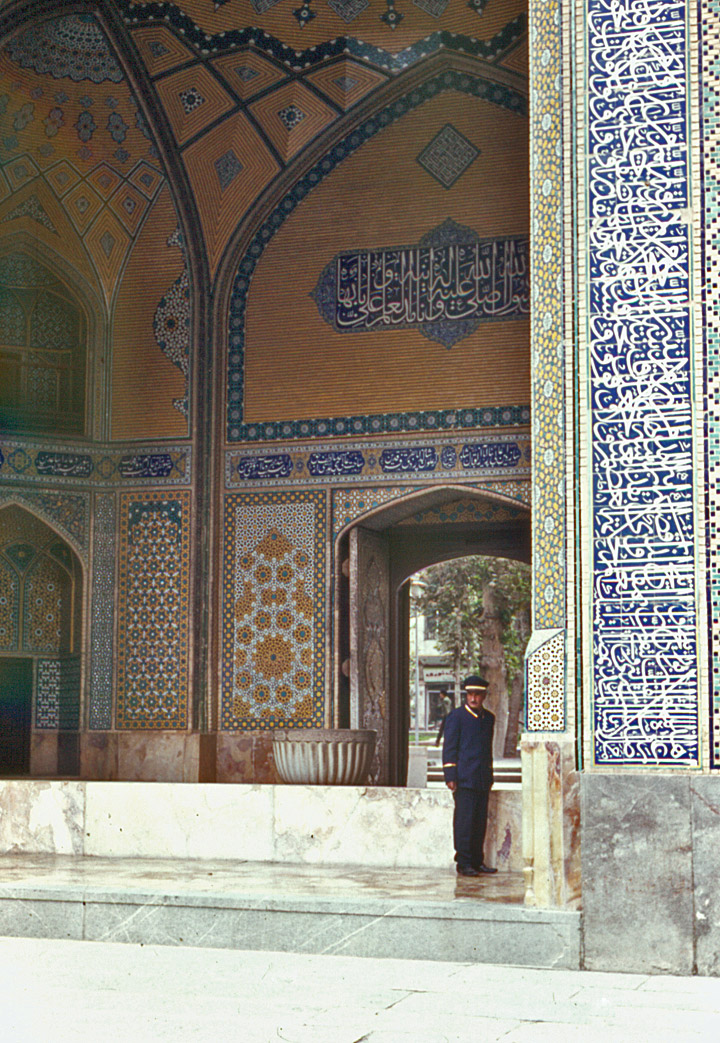


used as a hotel in 1964
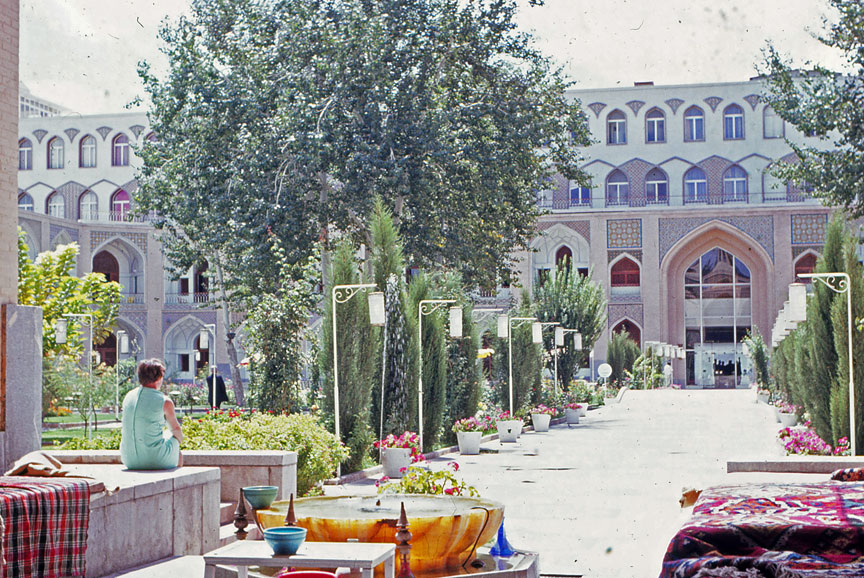
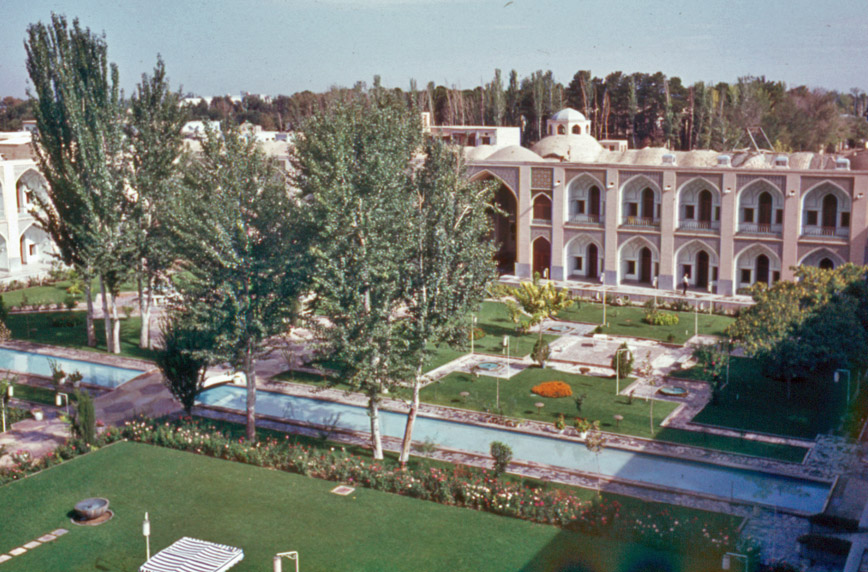
hotel courtyard



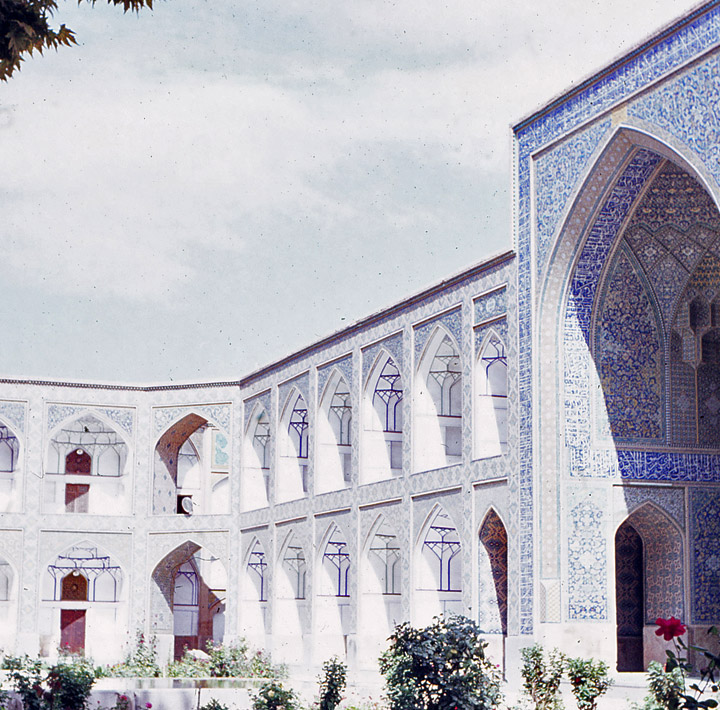
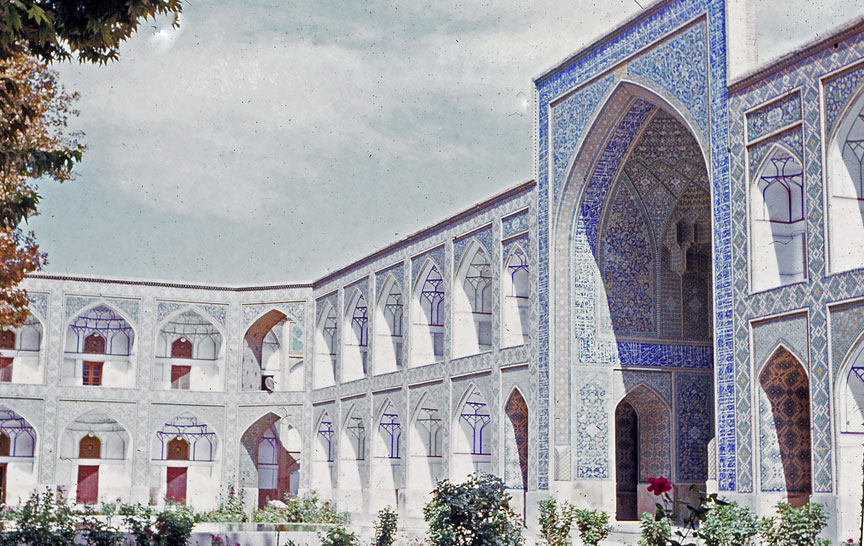
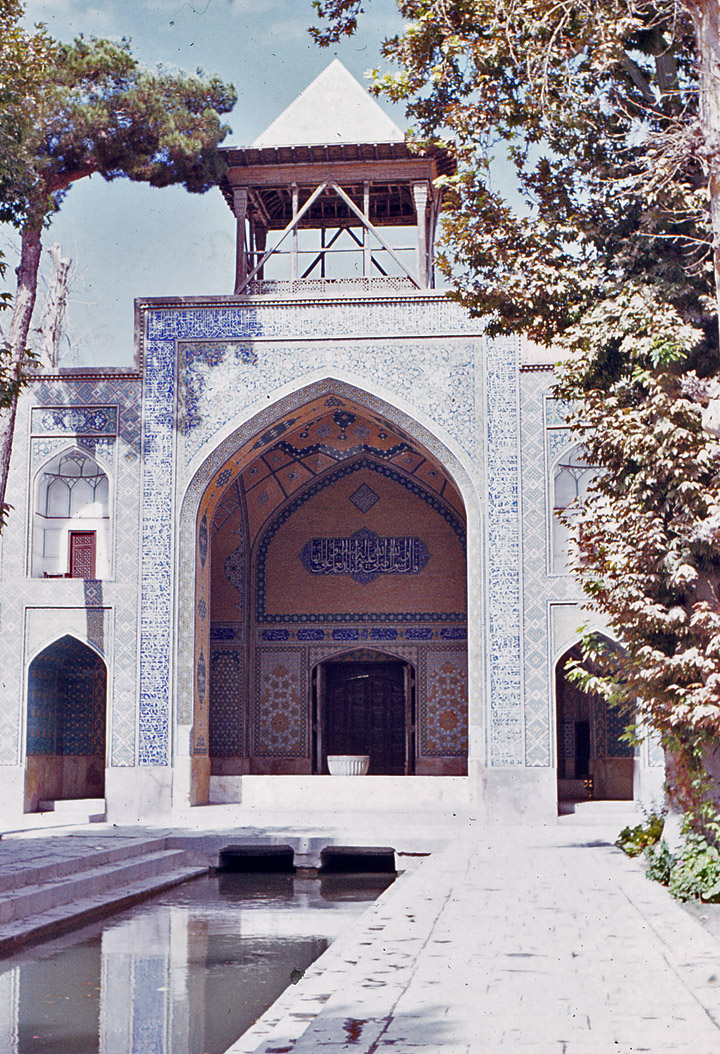
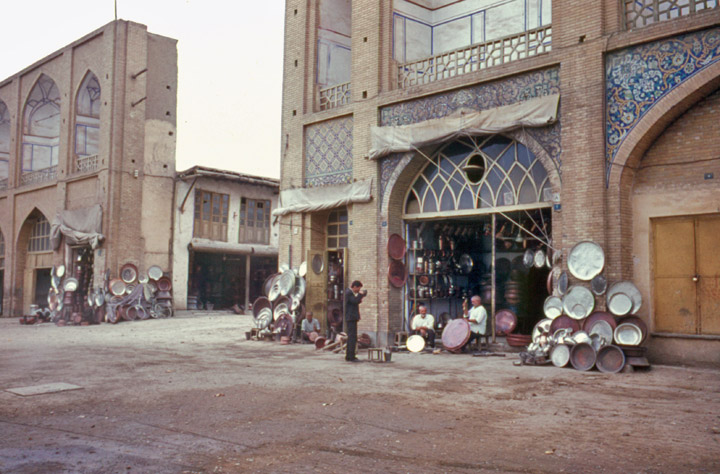
near the entrance to the covered bazaar
